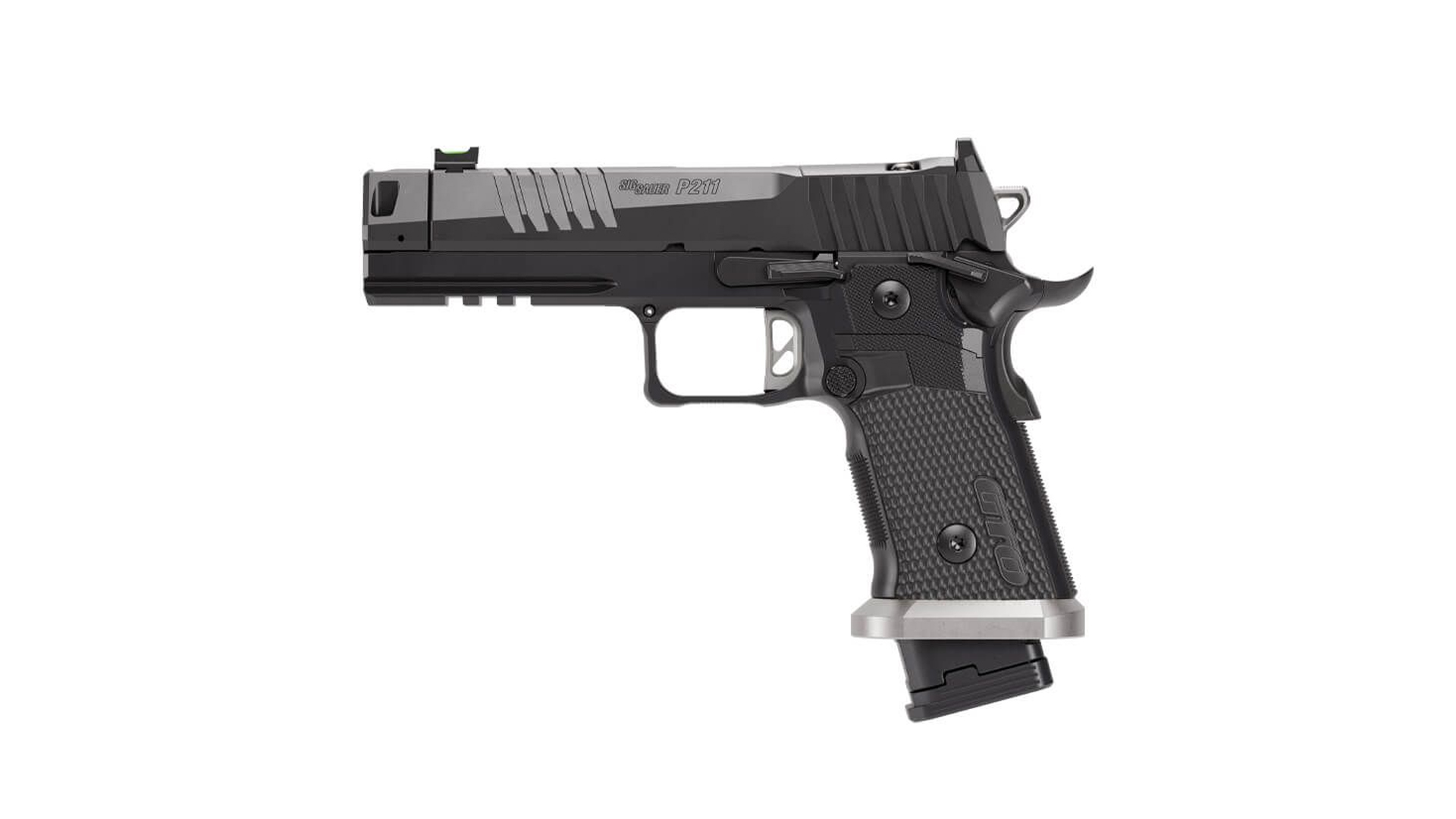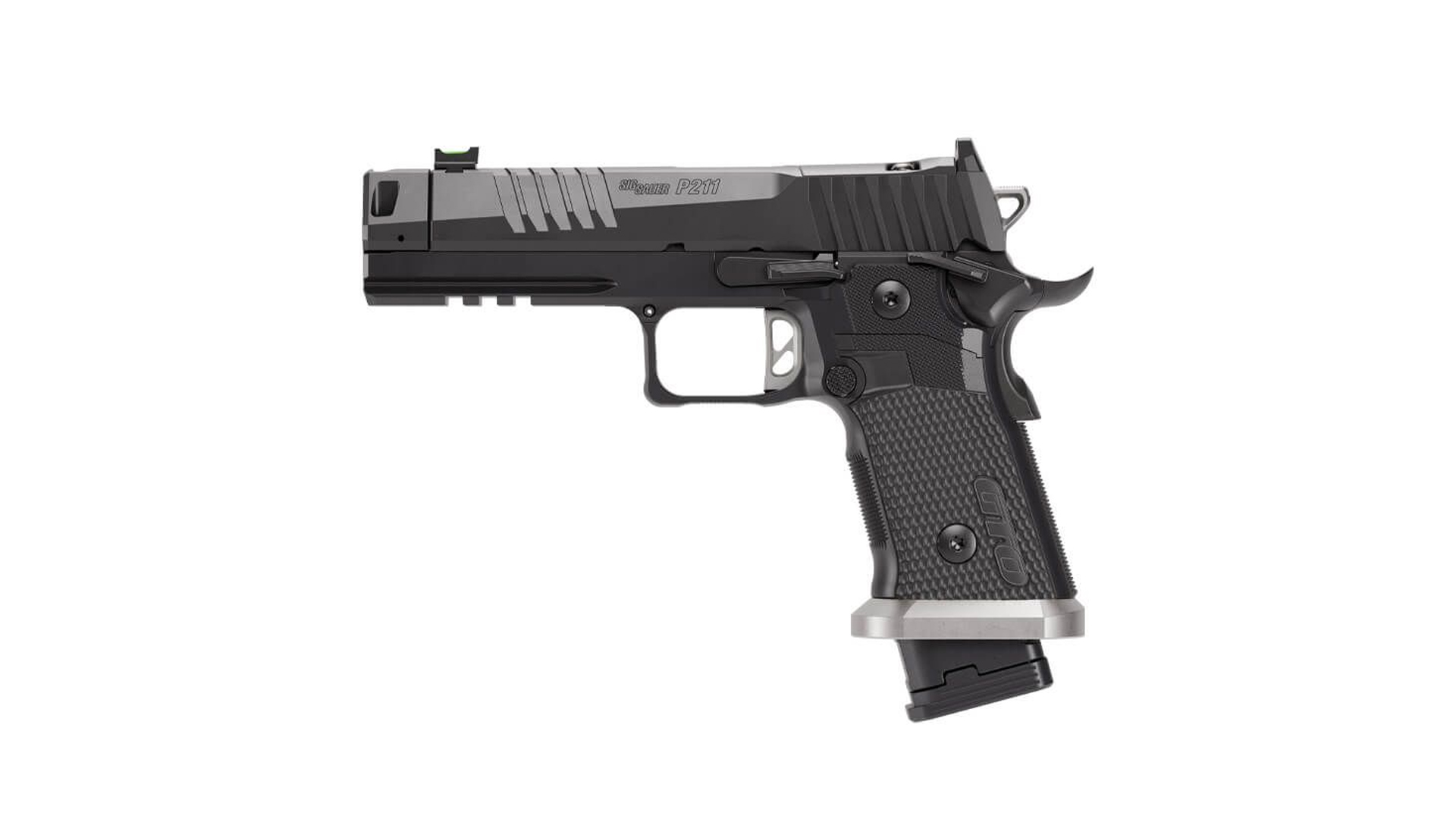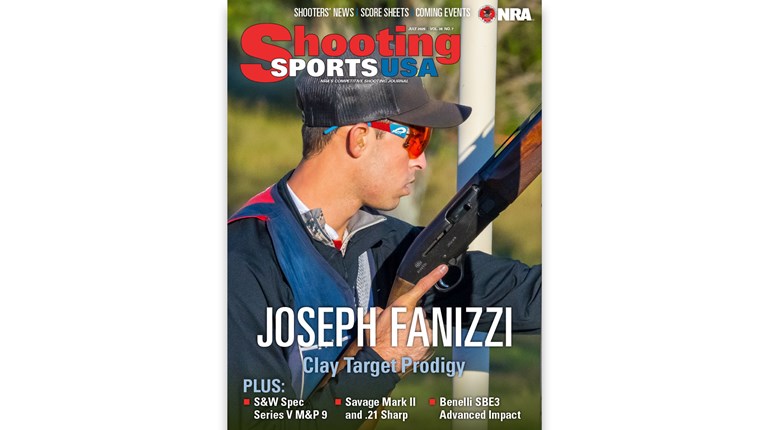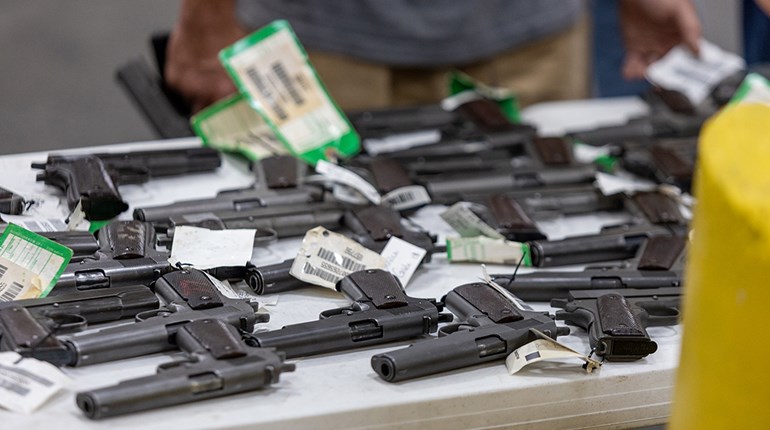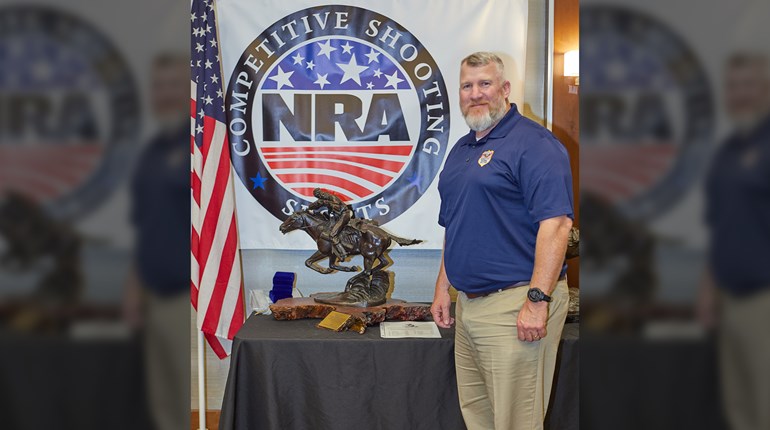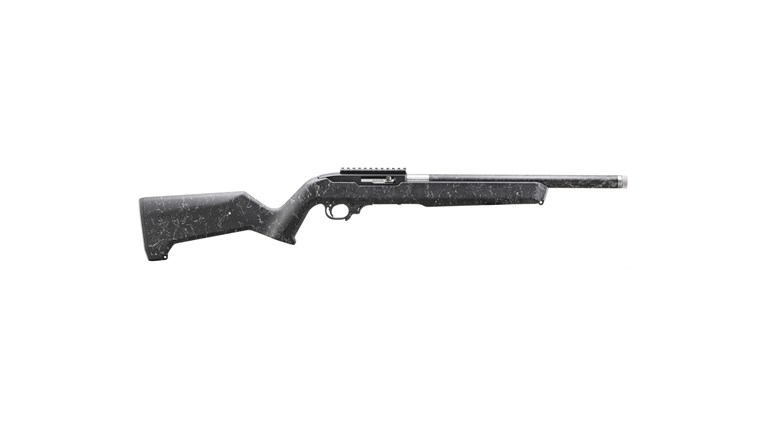** When you buy products through the links on our site, we may earn a commission that supports NRA's mission to protect, preserve and defend the Second Amendment. **

Military surplus rifles used to be the domain of handloaders after shooters exhausted the supply of milsurp ammunition. But Vintage Military Rifle (VMR) competition changed that and, recognizing the sport’s popularity, ammo makers are loading new ammunition to replace dwindling or disappeared obsolete cartridges.
When we hear, “competition” we naturally think “match grade ammo.” We’ll see if there is any such thing in obsolete calibers and whether the idea is even viable for the unaccurized milsurp rifles of CMP VMR games, but first let’s look at what standard ammo is available for these old guns.
Flood and drought
Ammo for some foreign milsurp rifles, such as .303 British for the Enfield rifles, never really went away. Major ammo makers have marketed soft point hunting ammunition in this caliber pretty much nonstop for about a hundred years. The Russian 7.62x54R was also in fairly ready supply between the world wars after the U.S. government dumped Mosin-Nagant rifles on the domestic market for about $3 apiece when the new Bolshevik government refused to honor the czar’s order for 1.5 million American-made rifles.

The influx of German 98k rifles following WWII prompted a steady, if not profuse, supply of American-made 8x57 Mauser ammo in hunting configuration, while the flood of Japanese 6.5 mm and 7.7 mm rifle “bring-backs” prompted little new U.S. ammo manufacture for those guns. Perusals of 1950s-era American Rifleman magazines indicate that many other post-war foreign milsurp rifles and their cartridges have been largely ignored once the supply of milsurp ammo―and en bloc clips for those requiring them―dried up.
The past two decades we’ve seen so many Mosin-Nagant and Mauser 98s imported here that their respective ammo is coming out of our ears. Milsurp is still available, and if you find ammo that includes chargers (stripper clips), you’re wise to buy and keep a good supply of the latter―it’s pretty slow reloading for the rapid fire stages of VMR matches without the chargers.
New old ammo
Among American and foreign makers who manufacture ammo for our vintage rifles we can list Federal, Winchester, Remington, Hornady, Creedmoor Sports, Norma, Aguila, Sellier & Bellot, Wolf and more. Most of these offerings go for about a dollar per shot.
One ammo maker has stepped into the VMR ring to offer quality, lower-priced cartridges in the most popular VMR calibers. I’ve examined and tested Serbian Prvi Partizan ammunition in .30-06, 6.5x55 Swedish and 7x57 Mauser and found it to be well made and accurate enough for 200-yard competition. The price of the FMJ bullet loadings is well below that of similar ammo from other makers; of course prices vary a bit, but these Prvi Partizan offerings are going for about $16 per box of 20:
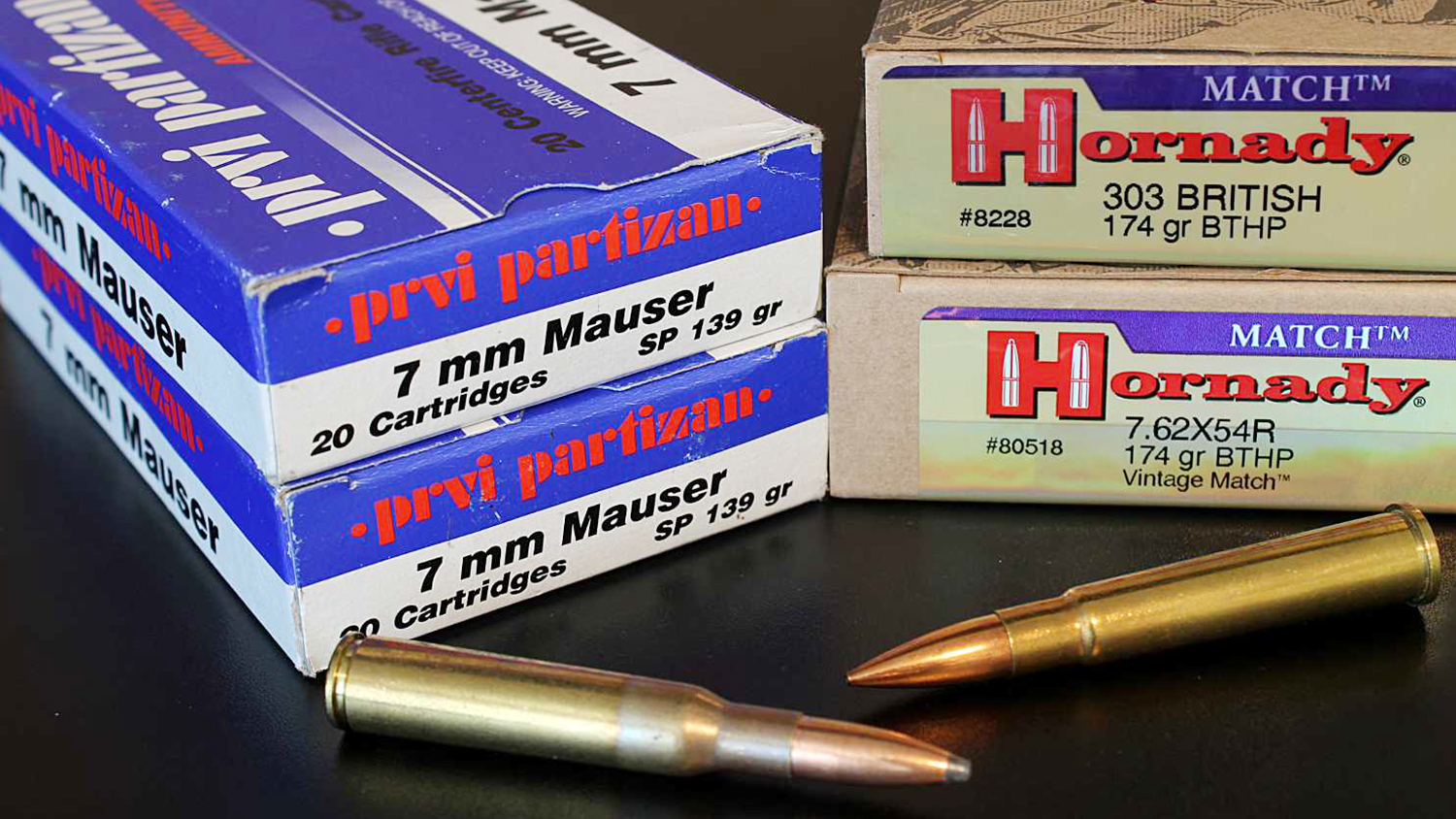
Their 8x57 Mauser and 7.5x55 Swiss get about a dollar more per box, and 8x56R Hungarian Mannlicher goes for about $23 per box of 20. Prvi Partizan uses Boxer primers in their brass cases, so the cases are readily reloadable. Here’s a few less popular VMR calibers available from smaller makers:
When price comparing, you’ll get a clear idea of cost when you break it down to per-cartridge price, which you figure by dividing the price by the number of cartridges (for example, at $24 per box, that Carcano ammo above is $1.20 per cartridge: 24 ÷ 20 = 1.2 or $1.20). This may sound like a no-brainer, but some folks do forget to add in the cost of shipping, which gives you your real-life price.
Primers and steel
There are a few things to consider, beyond simply the cost, when buying ammo for these old milsurp rifles.
Berdan primers: Foreign milsurp ammo typically has Berdan primers. Here in the U.S. we consider Berdan primed cases to be unreloadable. They will break resizing die decapping pins, so if you handload it’s important to not mix Berdan with Boxer-primed brass. If you’re unsure which you’re holding in your hand, shine a bright light down into the fired case; if you see two flash holes in the bottom, it’s a Berdan, if only one, it’s a Boxer.
Corrosive ammo: We frequently see advertising identifying milsurp ammo as “corrosive” or “non-corrosive.” Before WWII primers included fulminate of mercury or potassium chlorate, which caused bores to quickly corrode if not cleaned soon after firing. Since then, the U.S. and most foreign primers substitute non-corrosive lead styphnate for chlorate.
The magic ingredient in old cleaning solvents made to remove corrosive primer residue is water. The fulminates and chlorates in primers are salts, and they dissolve in water. Shooting “corrosive” ammo is not an issue if you include passes with water soaked patches in your bore cleaning regimen. Since “corrosive” ammo is frequently sold below the cost of “non-corrosive” ammo, a little elbow grease can save some coinage.
 Corroded cases: Militaries put considerable effort into protecting and preserving ammo for long term storage. After sealing primer pockets and case mouths with lacquer, they package ammunition in hermetically sealed cans or plastic. Even so, it’s not uncommon to open a sealed container of ammo and find some corroded cartridges.
Corroded cases: Militaries put considerable effort into protecting and preserving ammo for long term storage. After sealing primer pockets and case mouths with lacquer, they package ammunition in hermetically sealed cans or plastic. Even so, it’s not uncommon to open a sealed container of ammo and find some corroded cartridges.
Corrosion can weaken the case. While corrosion may appear as a surface condition, we can’t see what’s happened below the surface so the safest action is to salvage the bullets and dispose of corroded cases. Some shooters will clean minor surface corrosion from cases with an abrasive pad or steel wool and fire them anyway.
Steel cases: Did you know that during WWII the U.S. minted steel pennies and made steel .45 ACP cases? Brass is about 70 percent copper, and because copper is also widely needed for other uses in warfare, steel sometimes substitutes for brass. Typically, steel cases get a “copper wash” or coating of lacquer or polymer to facilitate feeding and extraction, and to prevent corrosion.
Many shooters have discovered that some commercial firearms, especially semi-autos, don’t reliably feed or extract steel cases, military or commercial. This problem is not typical with foreign military firearms firing military steel case ammo. The only way to know for sure is to try specific steel ammo, milsurp or modern commercial manufacture, in your specific firearm.
We consider steel cases non-reloadable because they are universally Berdan-primed and because steel, not being as malleable as brass, can be more difficult to work through resizing dies. Being both non-reloadable and lacking in copper, steel case ammo costs less than brass case ammo.
Match grade ammo
There’s not a lot of match grade government issue ammo out there. Supplies of .30-06 M72 dried up years ago, as did the Swedish stuff for their fine Mausers. We still see GP-11 (not really match ammo but very accurate) for the Swiss K31 and 1970s-era, Soviet-made 7.62x54R match for the Mosin-Nagant. With the increased interest in VMR competition, Hornady has been making match grade ammo for the most popular VMR rifles for several years now, with bullet weights and velocities replicating wartime originals. I’ve disassembled and examined several different Hornady Vintage Match cartridges and found them truly precision-made, with miniscule bullet runouts and consistent seating depths.
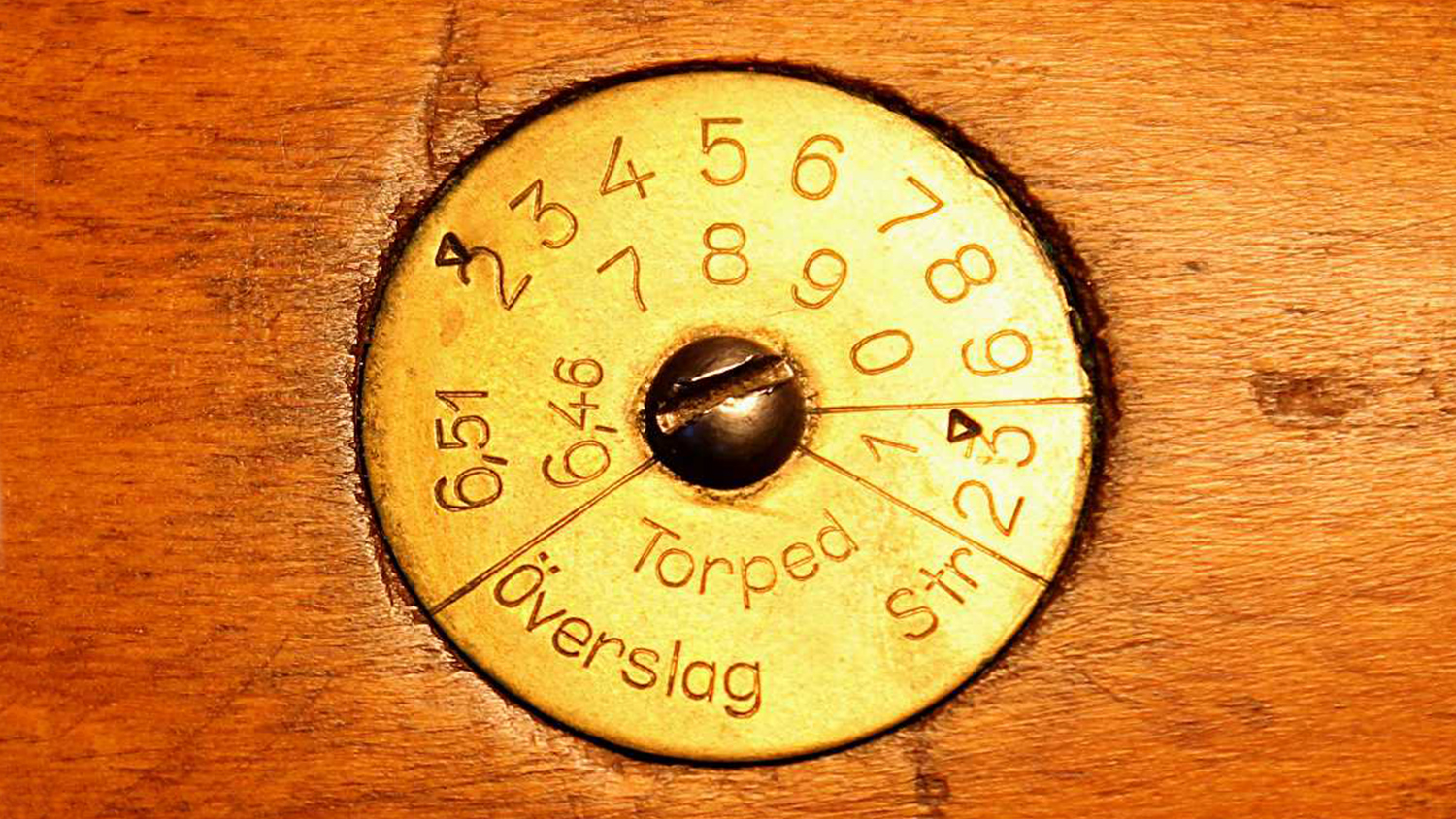
Firing match grade ammo in unaccurized military rifles, however, is a study in diminishing returns. In comparing Hornady’s Vintage Match ammo to milsurp ammo in the same rifle at 100 yards, groups shrank and even halved in some cases. Match ammo can help your milsurp rifle hold the 10-ring, but it can’t turn a sow’s ear into a silk purse―you won’t see X-ring groups from genuine, off-the-shelf warhorse rifles. However, rifles with new barrels, such as the Criterions that CMP and others install on refurbished Springfields and Garands, can really benefit from match ammo―the combination tightening up groups considerably.
Hornady makes match grade ammo in .303 British, 6.5x55 Swedish, 8x57 Mauser and 7.62x54R Russian, as well as M1 Garand Match at a pressure suitable for that rifle’s gas system.
Heavy boats?
We don’t really need heavy boat tail bullets to compete in VMR ranges of 200 or even 100 yards. Ballisticians developed the boat tail bullet to extend the usable accuracy range of machine guns, it does work in that regard and the design is staggeringly popular for match bullets. But the boat tail apparently has no significant accuracy advantage over flat base bullets at ranges under about 500 yards. More important is to be sure bullets aren’t too heavy (that is, too long) for a rifle’s twist rate. Also consider that lighter bullets and powder charges will reduce recoil.
Rear sight insight
We’ve got a pretty good assurance that milsurp ammo will have the proper weight bullet for its appropriate rifle, but many nations changed bullets and velocities in midstream, which means that rear sights needed to be re-regulated so that elevation markings matched the ammo’s performance. By the same token, your chosen ammo must match the rear sight; a mismatch accounts for why, say, Swedish m/41 ammo might strike a 200-yard target higher than the m/94 ammo when firing both from your M96 Mauser. You may also find that changing ammo brand requires a different sight picture “hold” or a sight modification within limits permitted by CMP rules, such as installing a higher or lower front sight blade.
VMR competition’s demand has made obsolete military ammo far more available than it was a decade ago. No longer the arcane purview of handloaders, new factory offerings have opened the field to all shooters and increased the value of old battle rifles.
Online sources for VMR cartridges
Sources for ammunition are as easy to find as simply entering the desired cartridge and “for sale” into the search bar of your browser. Here are a few examples from a quick search for 6.5x55 Swedish:
When we hear, “competition” we naturally think “match grade ammo.” We’ll see if there is any such thing in obsolete calibers and whether the idea is even viable for the unaccurized milsurp rifles of CMP VMR games, but first let’s look at what standard ammo is available for these old guns.
Flood and drought
Ammo for some foreign milsurp rifles, such as .303 British for the Enfield rifles, never really went away. Major ammo makers have marketed soft point hunting ammunition in this caliber pretty much nonstop for about a hundred years. The Russian 7.62x54R was also in fairly ready supply between the world wars after the U.S. government dumped Mosin-Nagant rifles on the domestic market for about $3 apiece when the new Bolshevik government refused to honor the czar’s order for 1.5 million American-made rifles.

A 1952 American Rifleman ad for a Dutch milsurp rifle. Today 6.5x53R is a handloading or custom order proposition and the cost of one en bloc clip is about equal to the rifle’s 1952 price.
The influx of German 98k rifles following WWII prompted a steady, if not profuse, supply of American-made 8x57 Mauser ammo in hunting configuration, while the flood of Japanese 6.5 mm and 7.7 mm rifle “bring-backs” prompted little new U.S. ammo manufacture for those guns. Perusals of 1950s-era American Rifleman magazines indicate that many other post-war foreign milsurp rifles and their cartridges have been largely ignored once the supply of milsurp ammo―and en bloc clips for those requiring them―dried up.
The past two decades we’ve seen so many Mosin-Nagant and Mauser 98s imported here that their respective ammo is coming out of our ears. Milsurp is still available, and if you find ammo that includes chargers (stripper clips), you’re wise to buy and keep a good supply of the latter―it’s pretty slow reloading for the rapid fire stages of VMR matches without the chargers.
New old ammo
Among American and foreign makers who manufacture ammo for our vintage rifles we can list Federal, Winchester, Remington, Hornady, Creedmoor Sports, Norma, Aguila, Sellier & Bellot, Wolf and more. Most of these offerings go for about a dollar per shot.
One ammo maker has stepped into the VMR ring to offer quality, lower-priced cartridges in the most popular VMR calibers. I’ve examined and tested Serbian Prvi Partizan ammunition in .30-06, 6.5x55 Swedish and 7x57 Mauser and found it to be well made and accurate enough for 200-yard competition. The price of the FMJ bullet loadings is well below that of similar ammo from other makers; of course prices vary a bit, but these Prvi Partizan offerings are going for about $16 per box of 20:
- .30-06/M2 Ball replica
- 6.5x55 Swedish
- .303 British
- 7.62x54R
- 7.5x54 French
- 6.5x52 Carcano

Prvi Partizan offers excellent, reloadable VMR cartridges at the lowest price point. At the other end of the scale, Hornady match ammo can wring the best from your VMR.
Their 8x57 Mauser and 7.5x55 Swiss get about a dollar more per box, and 8x56R Hungarian Mannlicher goes for about $23 per box of 20. Prvi Partizan uses Boxer primers in their brass cases, so the cases are readily reloadable. Here’s a few less popular VMR calibers available from smaller makers:
- 6.5x50 Japanese, Precision brand, $20/20 rounds
- 7.7x58 Japanese, G&S brand, $29/20 rounds
- 7.35x51 Caracano, Precision brand, $24/20 rounds
When price comparing, you’ll get a clear idea of cost when you break it down to per-cartridge price, which you figure by dividing the price by the number of cartridges (for example, at $24 per box, that Carcano ammo above is $1.20 per cartridge: 24 ÷ 20 = 1.2 or $1.20). This may sound like a no-brainer, but some folks do forget to add in the cost of shipping, which gives you your real-life price.
Primers and steel
There are a few things to consider, beyond simply the cost, when buying ammo for these old milsurp rifles.
Berdan primers: Foreign milsurp ammo typically has Berdan primers. Here in the U.S. we consider Berdan primed cases to be unreloadable. They will break resizing die decapping pins, so if you handload it’s important to not mix Berdan with Boxer-primed brass. If you’re unsure which you’re holding in your hand, shine a bright light down into the fired case; if you see two flash holes in the bottom, it’s a Berdan, if only one, it’s a Boxer.
Corrosive ammo: We frequently see advertising identifying milsurp ammo as “corrosive” or “non-corrosive.” Before WWII primers included fulminate of mercury or potassium chlorate, which caused bores to quickly corrode if not cleaned soon after firing. Since then, the U.S. and most foreign primers substitute non-corrosive lead styphnate for chlorate.
The magic ingredient in old cleaning solvents made to remove corrosive primer residue is water. The fulminates and chlorates in primers are salts, and they dissolve in water. Shooting “corrosive” ammo is not an issue if you include passes with water soaked patches in your bore cleaning regimen. Since “corrosive” ammo is frequently sold below the cost of “non-corrosive” ammo, a little elbow grease can save some coinage.

Milsurp ammo can suffer corrosion even when sealed in plastic or cans.
Corrosion can weaken the case. While corrosion may appear as a surface condition, we can’t see what’s happened below the surface so the safest action is to salvage the bullets and dispose of corroded cases. Some shooters will clean minor surface corrosion from cases with an abrasive pad or steel wool and fire them anyway.
Steel cases: Did you know that during WWII the U.S. minted steel pennies and made steel .45 ACP cases? Brass is about 70 percent copper, and because copper is also widely needed for other uses in warfare, steel sometimes substitutes for brass. Typically, steel cases get a “copper wash” or coating of lacquer or polymer to facilitate feeding and extraction, and to prevent corrosion.
Many shooters have discovered that some commercial firearms, especially semi-autos, don’t reliably feed or extract steel cases, military or commercial. This problem is not typical with foreign military firearms firing military steel case ammo. The only way to know for sure is to try specific steel ammo, milsurp or modern commercial manufacture, in your specific firearm.
We consider steel cases non-reloadable because they are universally Berdan-primed and because steel, not being as malleable as brass, can be more difficult to work through resizing dies. Being both non-reloadable and lacking in copper, steel case ammo costs less than brass case ammo.
Match grade ammo
There’s not a lot of match grade government issue ammo out there. Supplies of .30-06 M72 dried up years ago, as did the Swedish stuff for their fine Mausers. We still see GP-11 (not really match ammo but very accurate) for the Swiss K31 and 1970s-era, Soviet-made 7.62x54R match for the Mosin-Nagant. With the increased interest in VMR competition, Hornady has been making match grade ammo for the most popular VMR rifles for several years now, with bullet weights and velocities replicating wartime originals. I’ve disassembled and examined several different Hornady Vintage Match cartridges and found them truly precision-made, with miniscule bullet runouts and consistent seating depths.

The bottom third of the disc in the Swedish M38 rifle buttstock indicates the decimeters of holdover needed when shooting 139-grain bullets with a rear sight graduated for the earlier 156-grain bullet. ‘Torped’ is ‘spitzer, boat tail;’ ‘Överslag’ is ‘impact above;’ ‘Str’ is ‘point.’ No stamped entry in that area of the disc means the rear sight is the proper one for the lighter bullet.
Firing match grade ammo in unaccurized military rifles, however, is a study in diminishing returns. In comparing Hornady’s Vintage Match ammo to milsurp ammo in the same rifle at 100 yards, groups shrank and even halved in some cases. Match ammo can help your milsurp rifle hold the 10-ring, but it can’t turn a sow’s ear into a silk purse―you won’t see X-ring groups from genuine, off-the-shelf warhorse rifles. However, rifles with new barrels, such as the Criterions that CMP and others install on refurbished Springfields and Garands, can really benefit from match ammo―the combination tightening up groups considerably.
Hornady makes match grade ammo in .303 British, 6.5x55 Swedish, 8x57 Mauser and 7.62x54R Russian, as well as M1 Garand Match at a pressure suitable for that rifle’s gas system.
Heavy boats?
We don’t really need heavy boat tail bullets to compete in VMR ranges of 200 or even 100 yards. Ballisticians developed the boat tail bullet to extend the usable accuracy range of machine guns, it does work in that regard and the design is staggeringly popular for match bullets. But the boat tail apparently has no significant accuracy advantage over flat base bullets at ranges under about 500 yards. More important is to be sure bullets aren’t too heavy (that is, too long) for a rifle’s twist rate. Also consider that lighter bullets and powder charges will reduce recoil.
Rear sight insight
We’ve got a pretty good assurance that milsurp ammo will have the proper weight bullet for its appropriate rifle, but many nations changed bullets and velocities in midstream, which means that rear sights needed to be re-regulated so that elevation markings matched the ammo’s performance. By the same token, your chosen ammo must match the rear sight; a mismatch accounts for why, say, Swedish m/41 ammo might strike a 200-yard target higher than the m/94 ammo when firing both from your M96 Mauser. You may also find that changing ammo brand requires a different sight picture “hold” or a sight modification within limits permitted by CMP rules, such as installing a higher or lower front sight blade.
VMR competition’s demand has made obsolete military ammo far more available than it was a decade ago. No longer the arcane purview of handloaders, new factory offerings have opened the field to all shooters and increased the value of old battle rifles.
Online sources for VMR cartridges
Sources for ammunition are as easy to find as simply entering the desired cartridge and “for sale” into the search bar of your browser. Here are a few examples from a quick search for 6.5x55 Swedish:
- www.surplusammo.com
- www.grafs.com/military-surplus
- www.sgammo.com
- www.targetsportsusa.com
- www.midwayusa.com
- estore.thecmp.org/?cat=AMC



